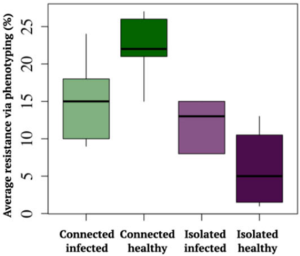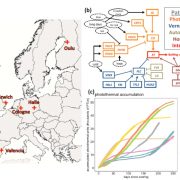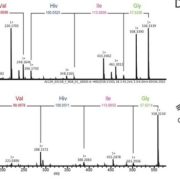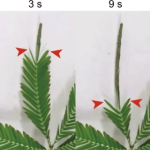Staying connected helps plant population fitness
 Many animals, including humans, tangibly benefit from living socially. Does this benefit extend to plants? A recent study by Höckerstedt et al. says it does. The authors studied a wild host-pathogen population, Plantago lanceolata, and its obligate powdery mildew pathogen Podosphaera plantaginis in 4000 locations in the Åland islands of Finland. They categorized the populations based on the previous infection and if the population was isolated or connected with other populations. From field studies, the authors observed that infection limits population growth in isolated populations more than in connected populations. Additionally, they set up an inoculation study using 19 isolated or well-connected populations and four different pathogen strains. From this, they observed that isolated populations are more susceptible and well-connected populations show a more diverse spectrum of resistance. The highest resistance was observed in previously uninfected connected populations while the least was observed in previously uninfected isolated populations. Transient and long-term simulations indicate that although disease prevalence, infectivity, and resistance will always be higher in well-connected populations, likely the evolutionary cost of maintaining the resistance will be lower. (Summary by Kamal Kumar Malukani, @KamalMalukani) Nature Comms. 10.1038/s41467-022-33665-3.
Many animals, including humans, tangibly benefit from living socially. Does this benefit extend to plants? A recent study by Höckerstedt et al. says it does. The authors studied a wild host-pathogen population, Plantago lanceolata, and its obligate powdery mildew pathogen Podosphaera plantaginis in 4000 locations in the Åland islands of Finland. They categorized the populations based on the previous infection and if the population was isolated or connected with other populations. From field studies, the authors observed that infection limits population growth in isolated populations more than in connected populations. Additionally, they set up an inoculation study using 19 isolated or well-connected populations and four different pathogen strains. From this, they observed that isolated populations are more susceptible and well-connected populations show a more diverse spectrum of resistance. The highest resistance was observed in previously uninfected connected populations while the least was observed in previously uninfected isolated populations. Transient and long-term simulations indicate that although disease prevalence, infectivity, and resistance will always be higher in well-connected populations, likely the evolutionary cost of maintaining the resistance will be lower. (Summary by Kamal Kumar Malukani, @KamalMalukani) Nature Comms. 10.1038/s41467-022-33665-3.









